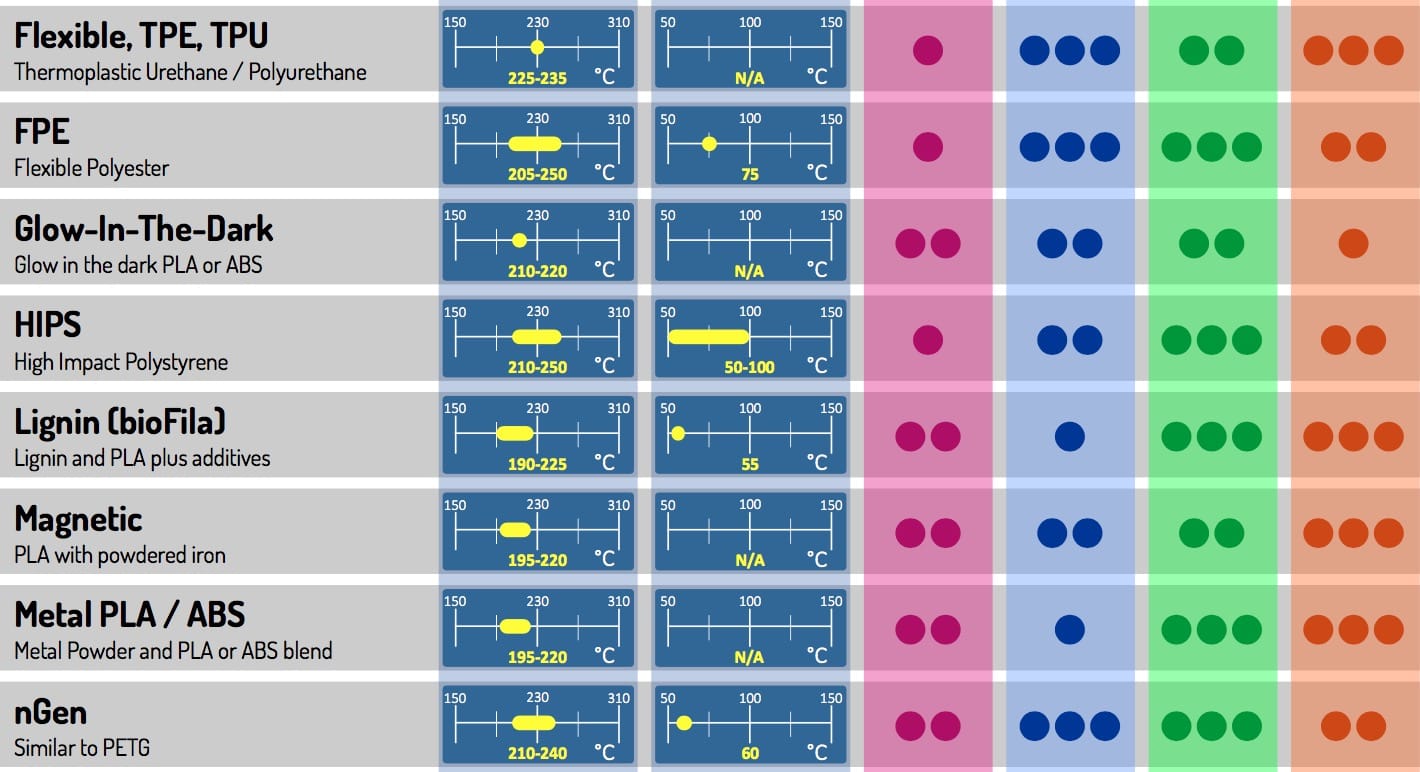
With the continual introduction of new 3D printer filament materials, it’s become hard to keep track of them all. Until you see this terrific chart.
The chart was produced by UK-based ThreeDotZero Studios, who provide “support service to fast-growing technology-based businesses.” Currently they offer services in VR/AR, Home Automation, UAVs/Drones, Maker Market, Gaming Hardware, MVNO/MVNE and “Other Gadgetry”.
As a result of their work, they have no doubt become involved in 3D printing and have been exposed to the myriad of 3D printing materials. And their experience caused them to produce a very interesting chart that covers quite a bit of ground.
The materials covered include: ABS, ASA, Carbon Fiber, Cleaning, Color Changing, Conductive, Flexible, FPE, Glow-in-the-Dark, HIPS, Lignin, Magnetic, Metal, nGen, Nylon, PC, PC-ABS, PET, PET-G, PETT, PLA, PMMA, POM, PORO-LAY, PP, PVA, Sandstone, TPC, Wax and Wood. One material they should add would be PEEK.
But each item is cross referenced to a number of factors, include extrusion and bed temperatures; strength, flexibility and durability; ease of printing; shrinkage; solubility and in what substance; food safety; use of blue tape and/or glue stick.
I should caution you that even if a material is food safe, it is definitely not clear that an object printed in that material is food safe: the printer it passes through may expose it to toxic materials, such as lead in the nozzle, for example. Additionally, extruded objects tend to collect bacteria in their layer gaps making them impossible to properly clean and thus are not food safe.
But regardless, this is a wonderful chart for those wishing to explore new materials for their devices.
However, I fear that this type of chart is going to have to be updated regularly to ensure completeness with the burgeoning number of new materials that seem to appear weekly these days.
Nevertheless, thanks to ThreeDotZero Studios you can download this PDF at no charge.

